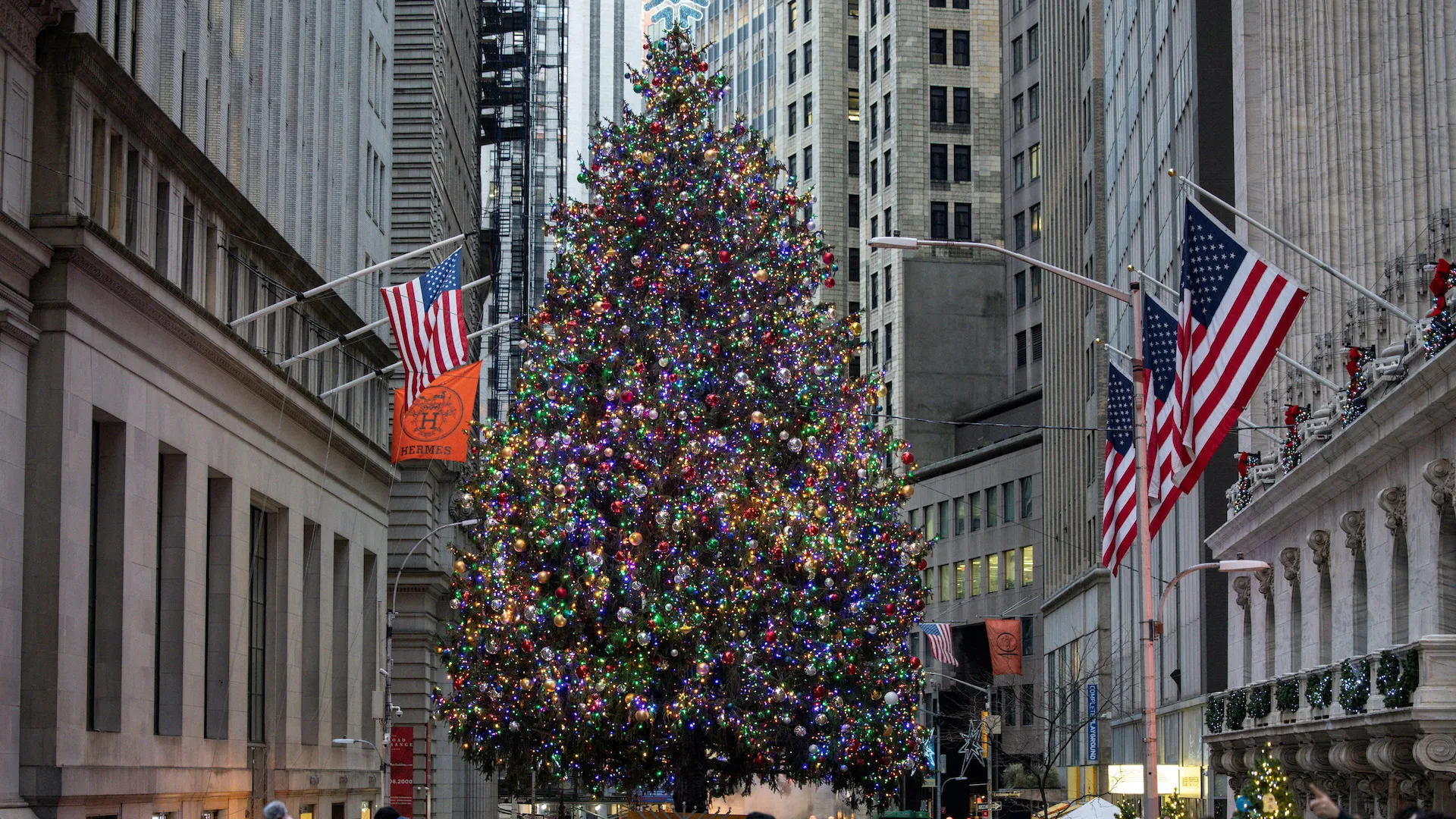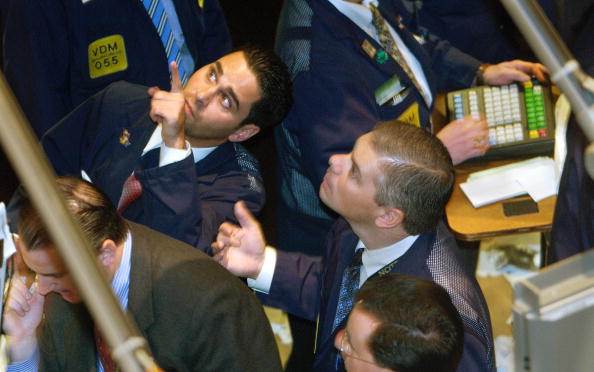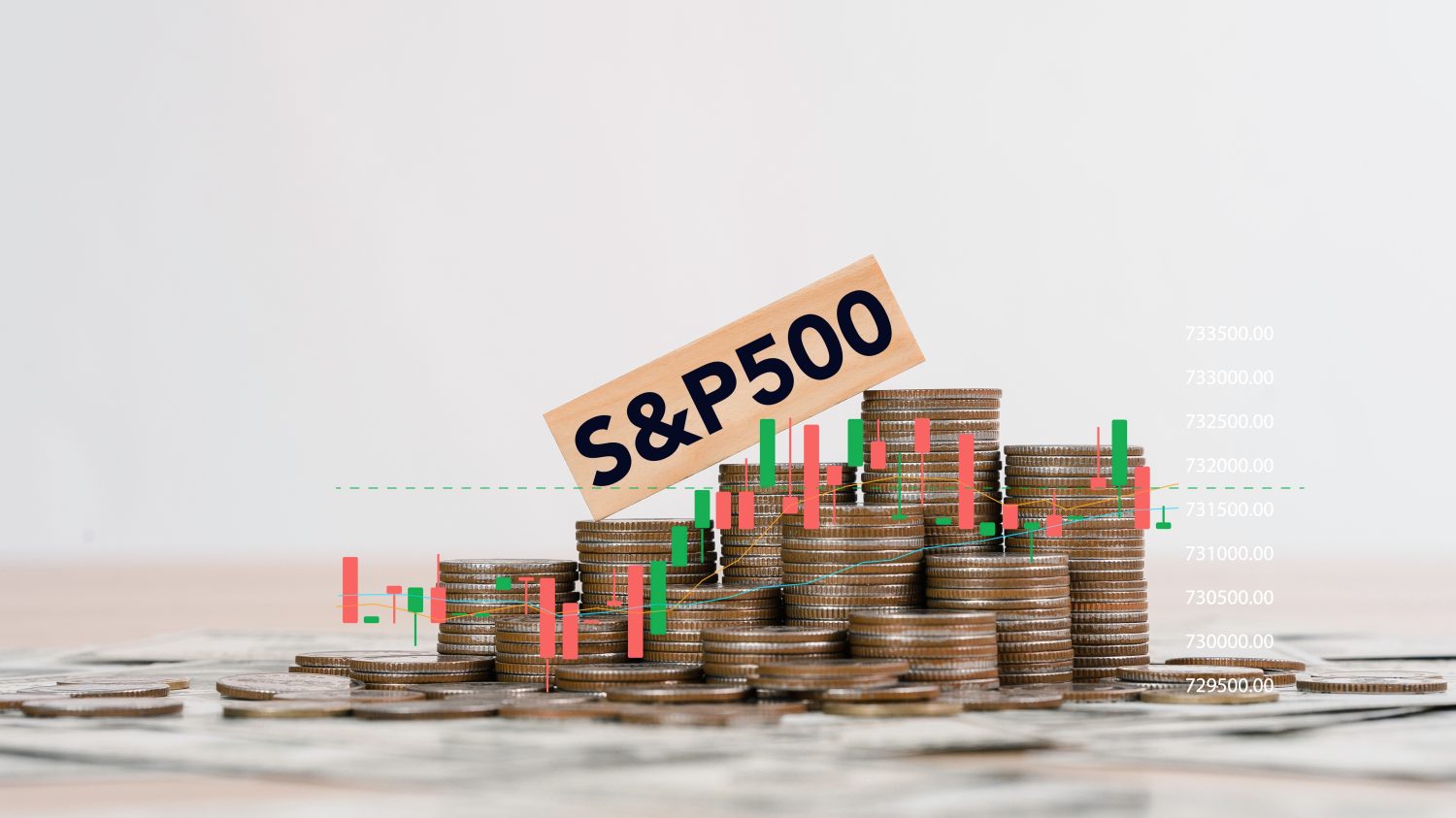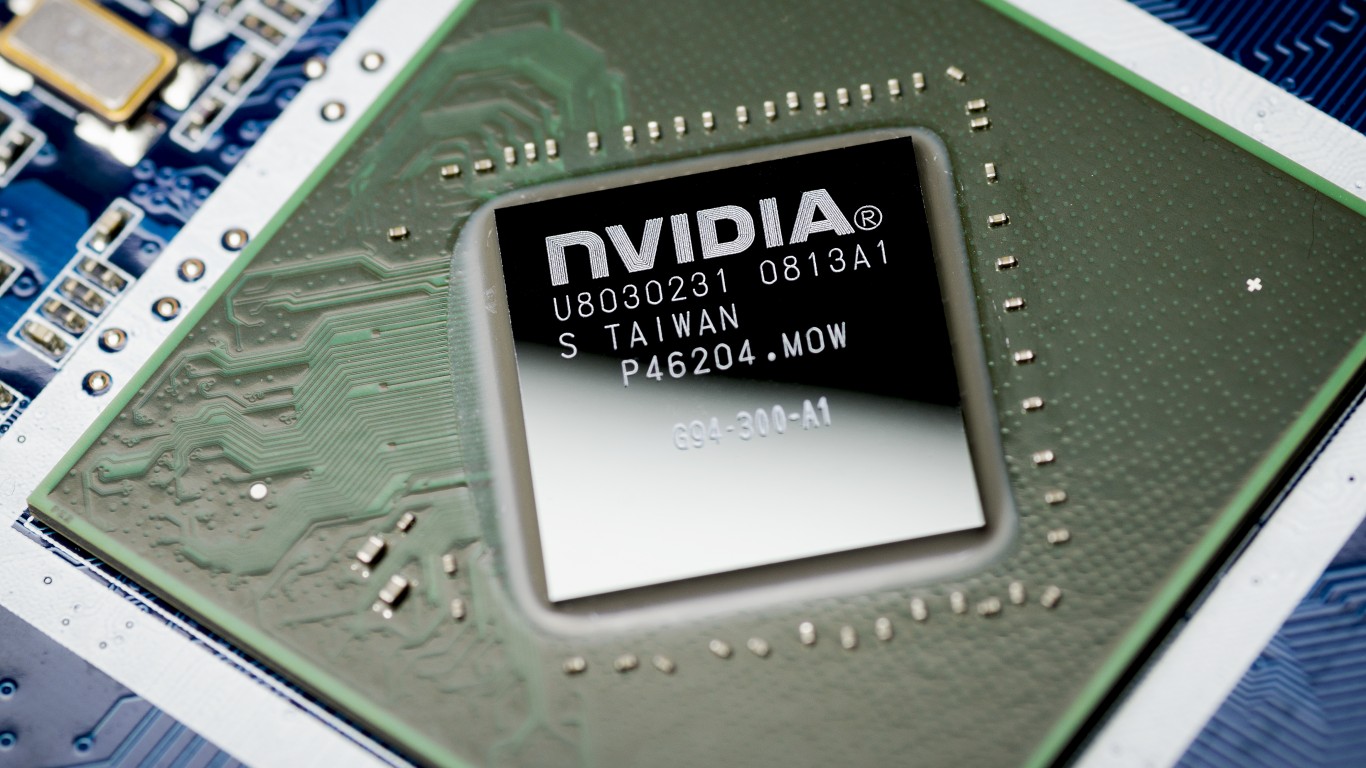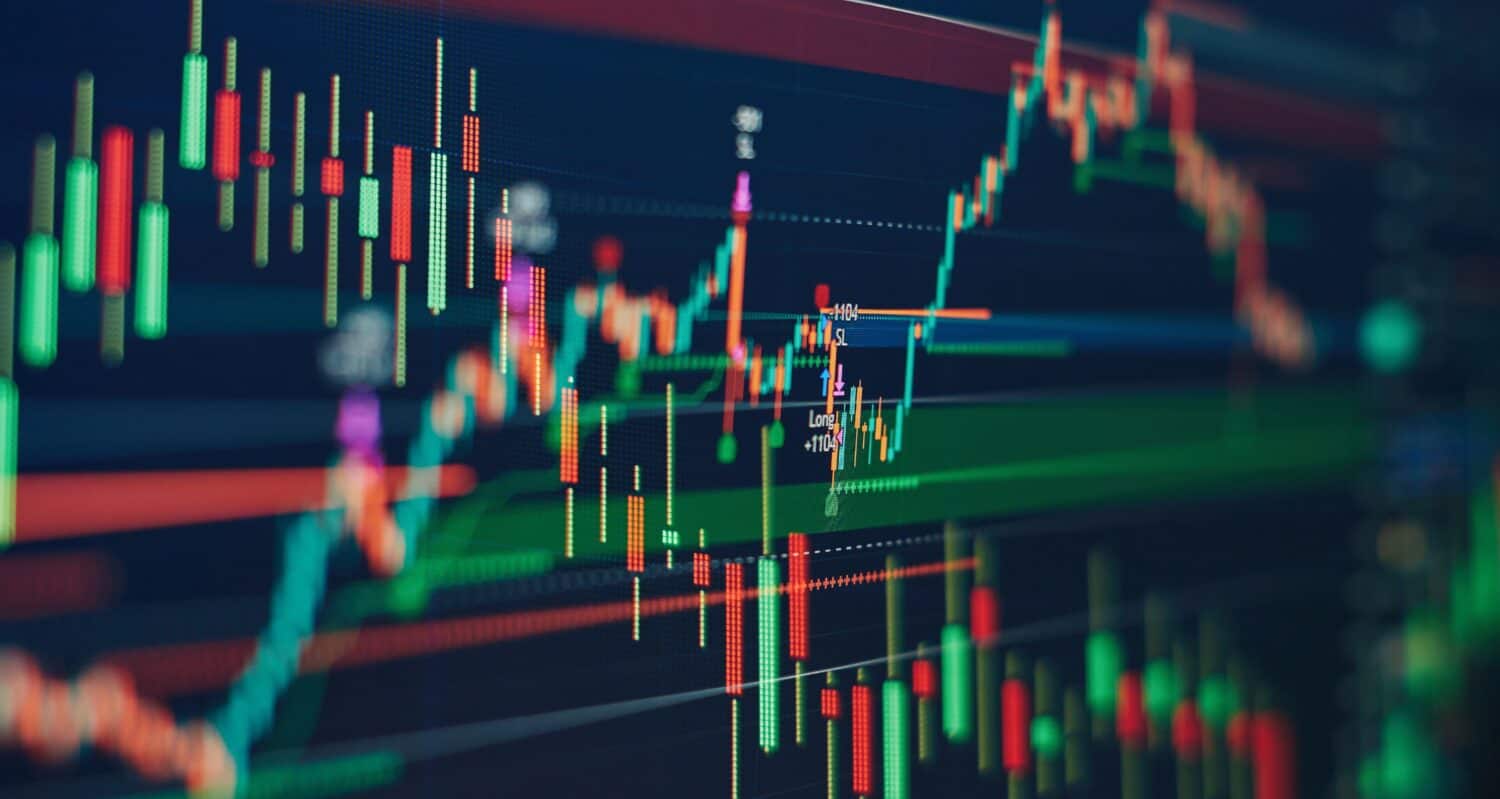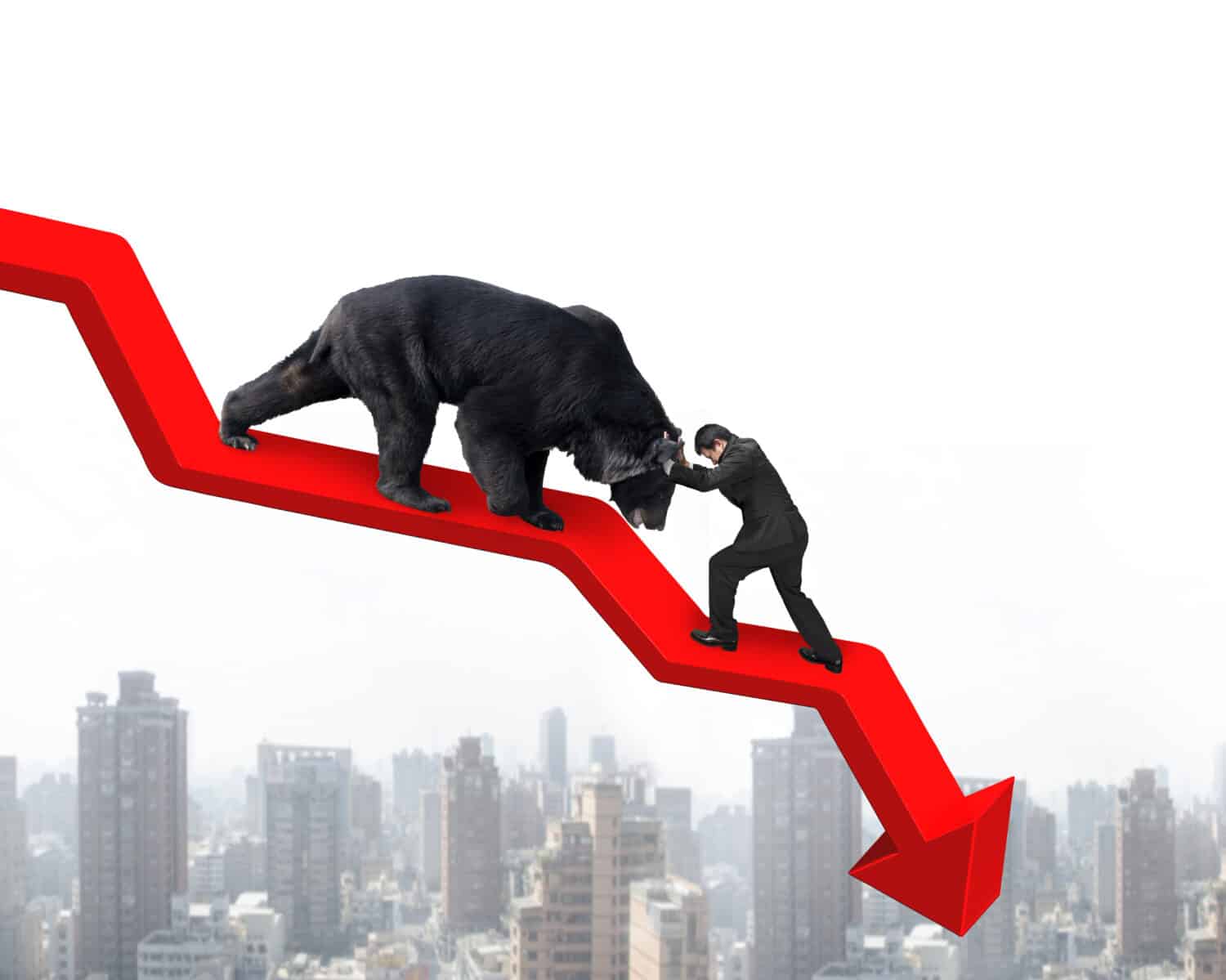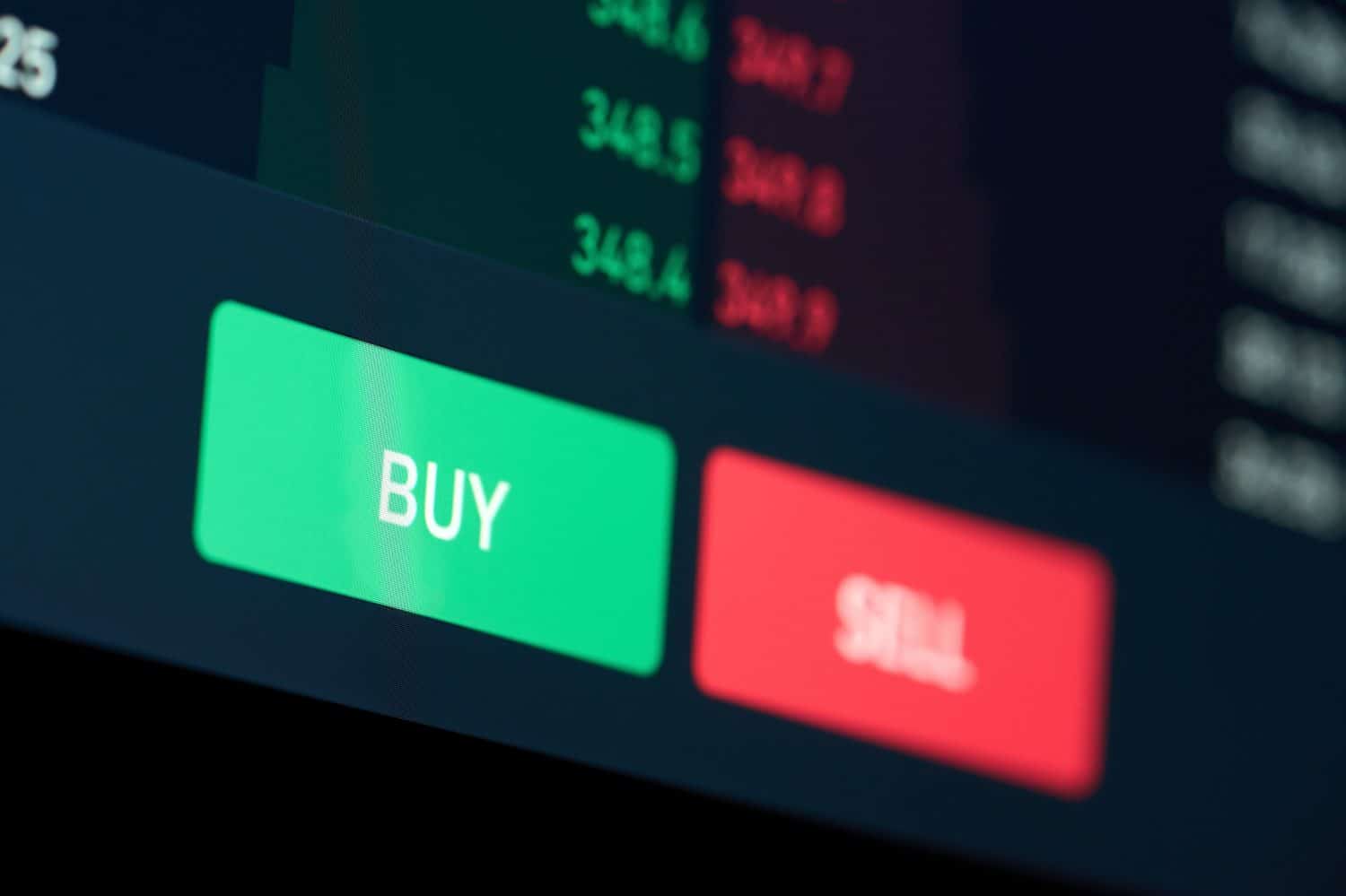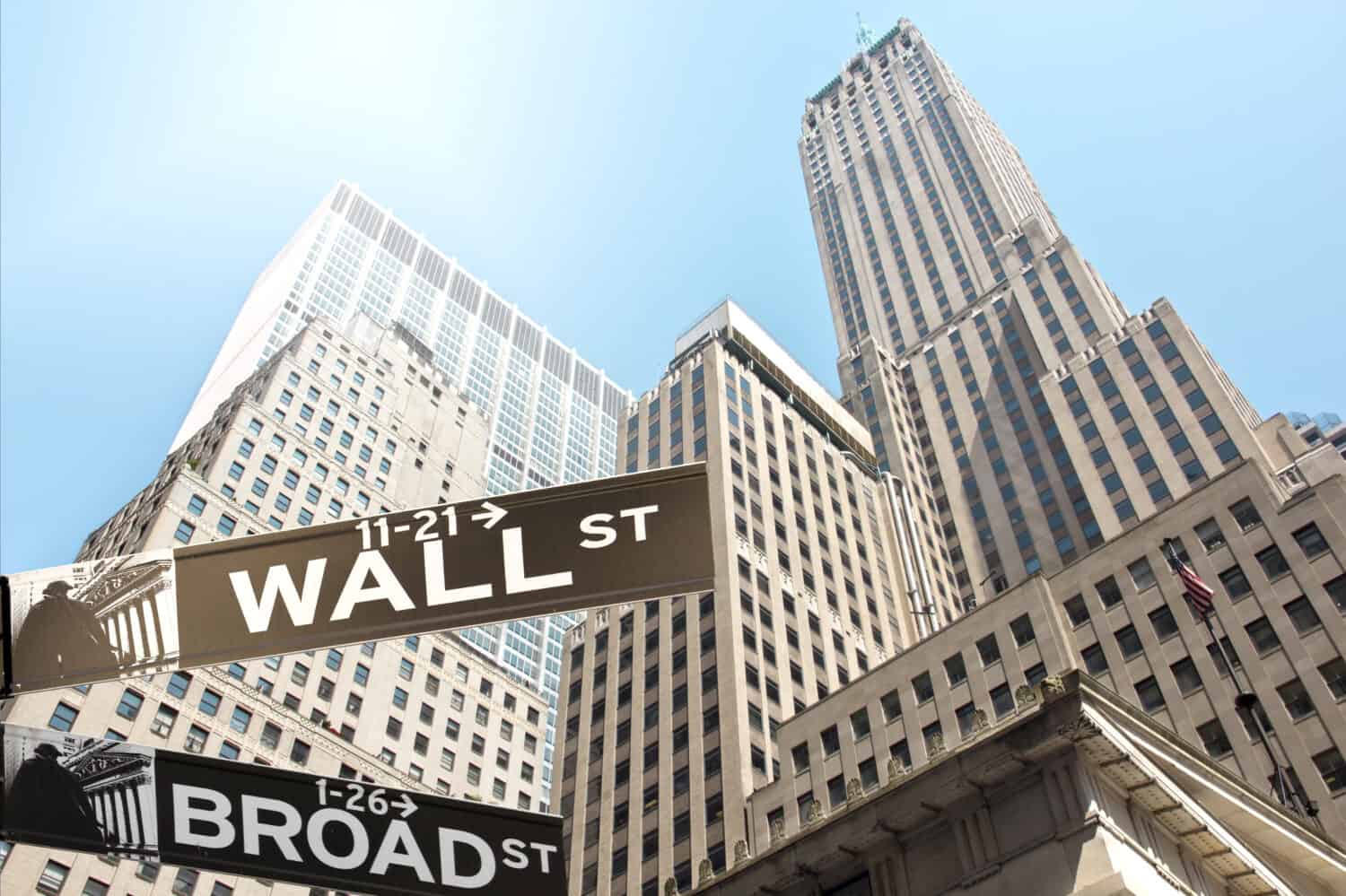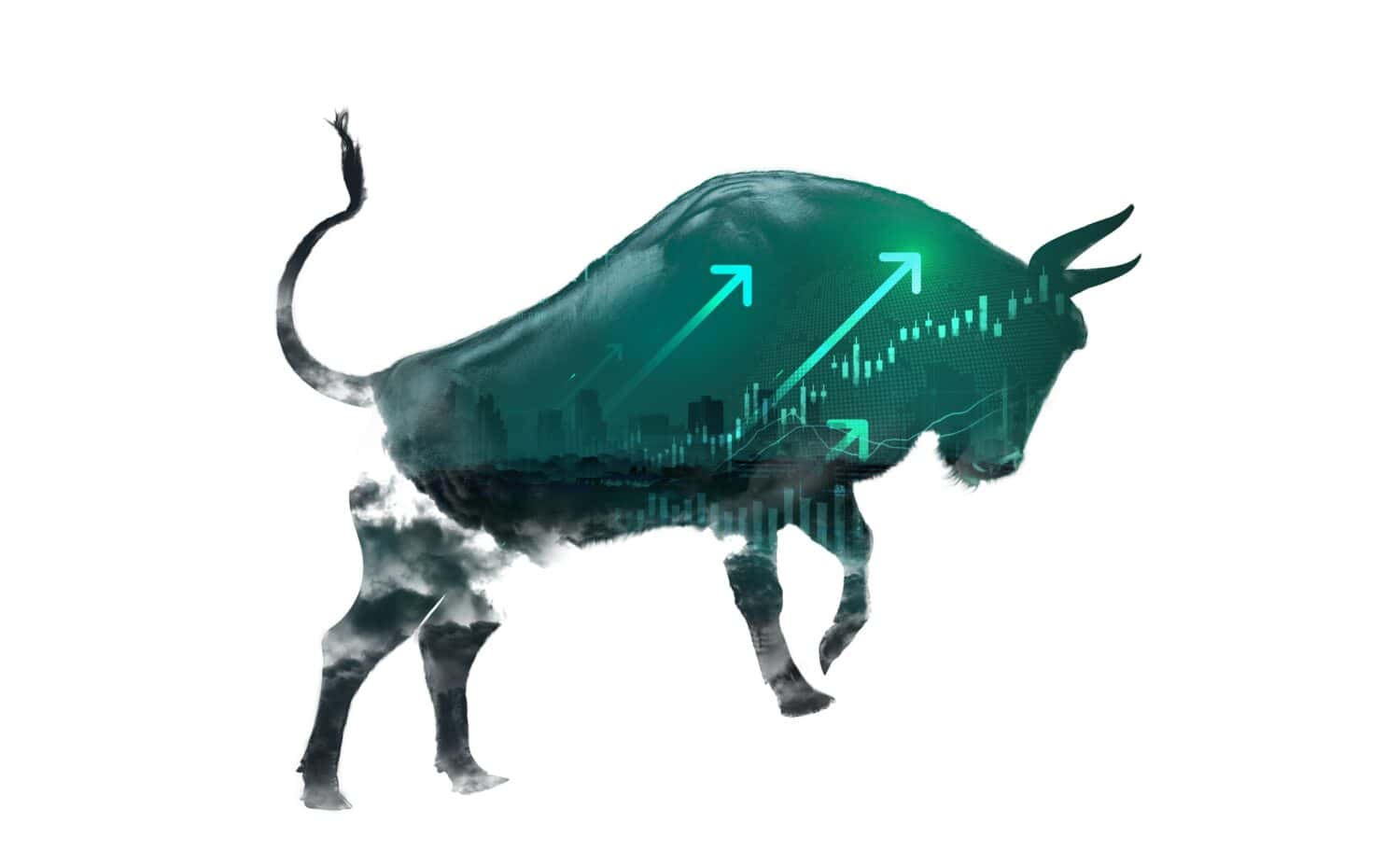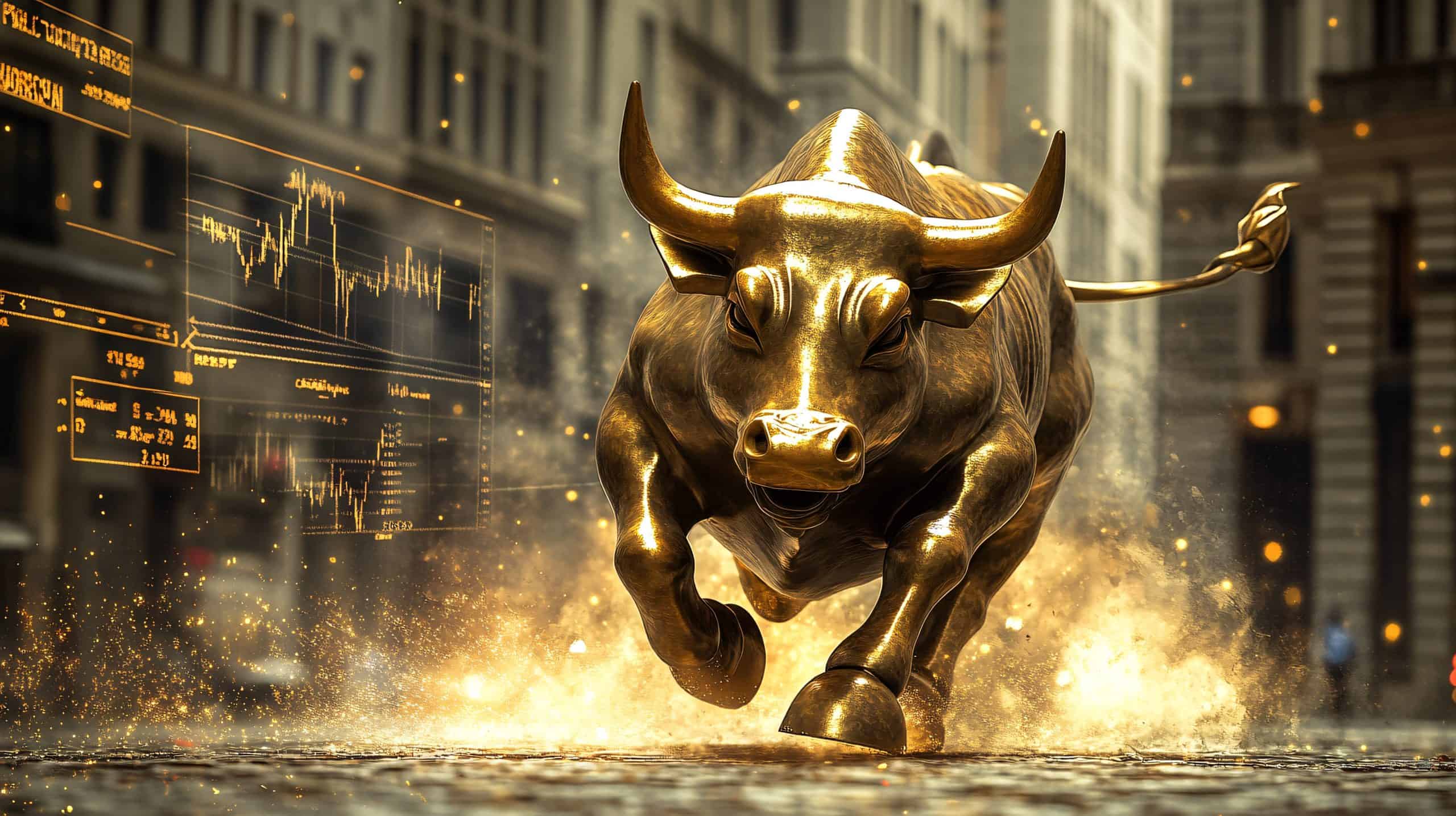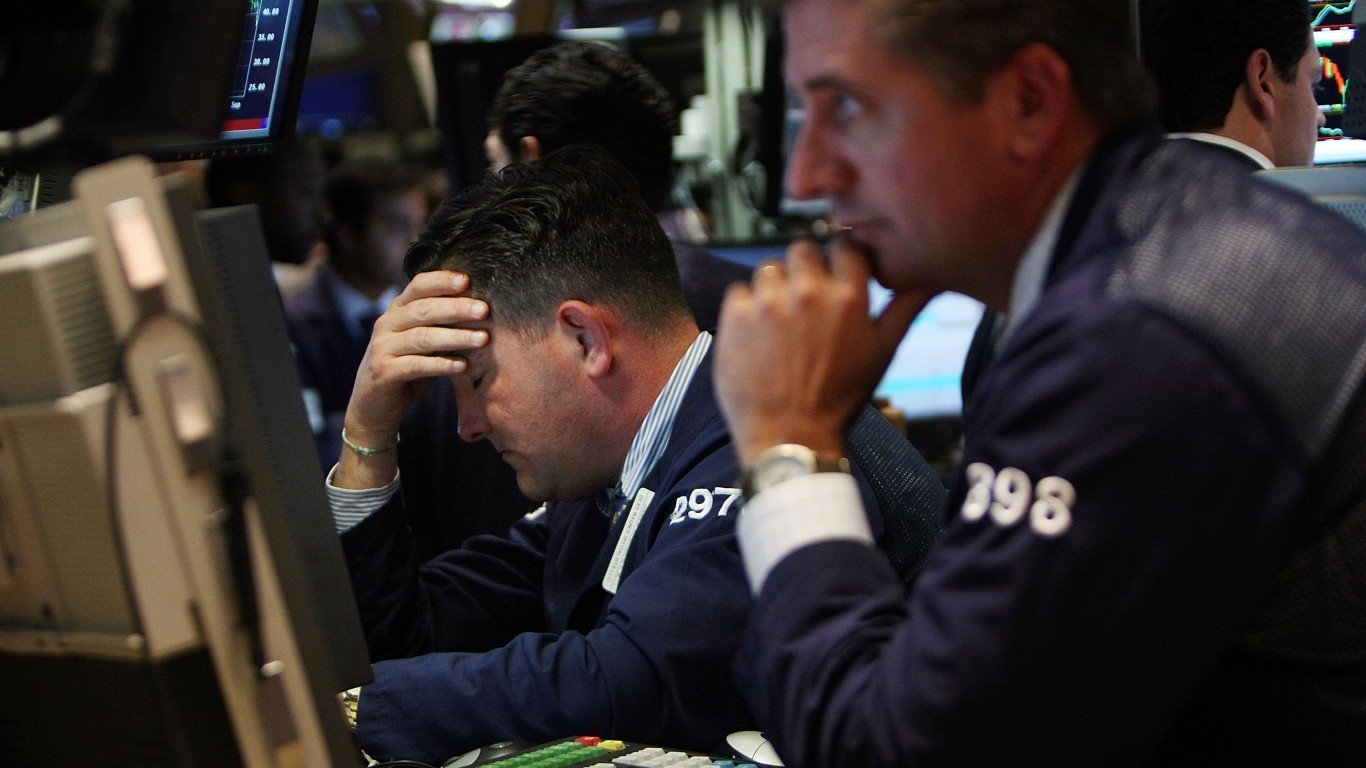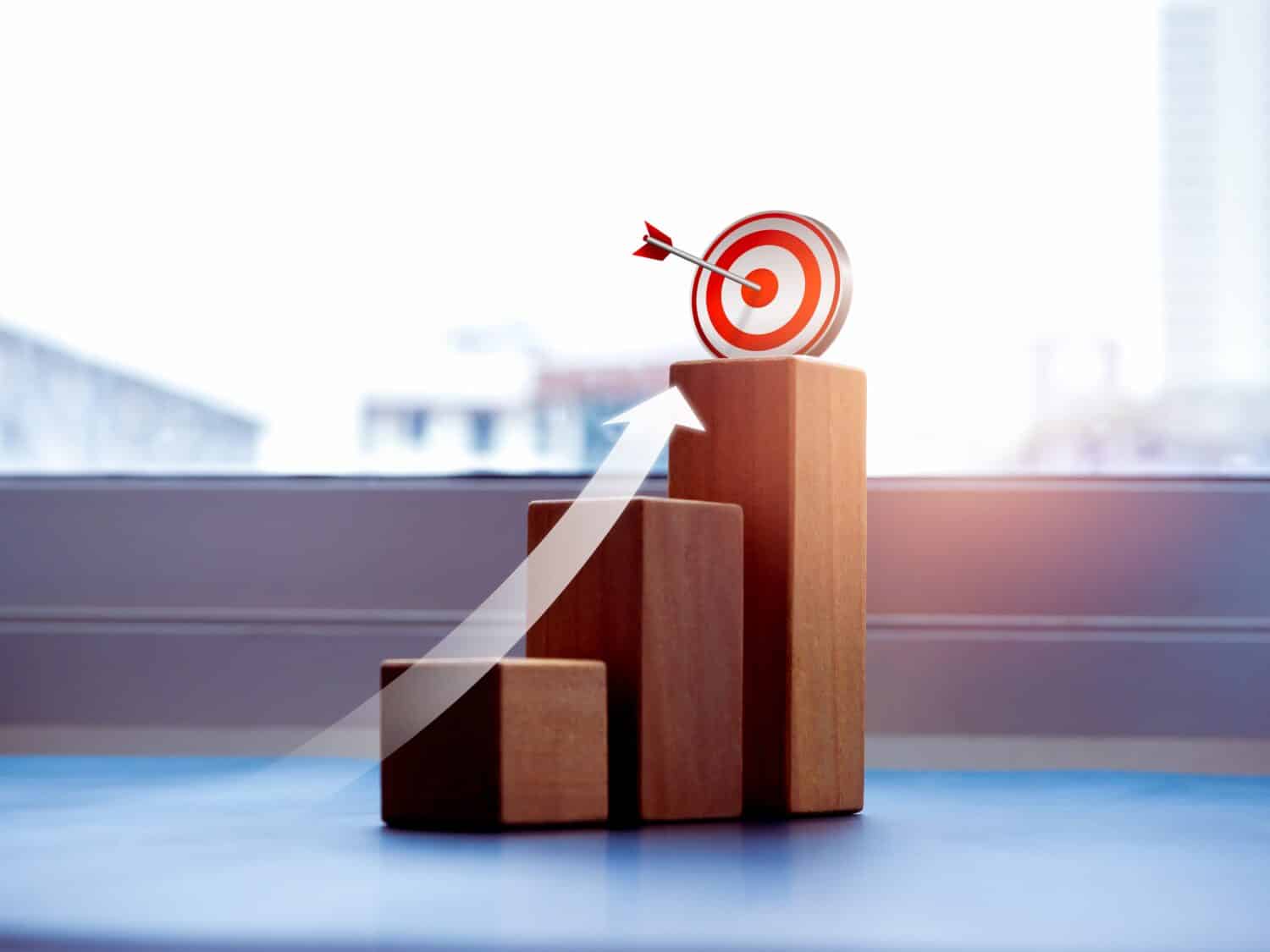#sp-500
#sp-500
[ follow ]
US news
fromLondon Business News | Londonlovesbusiness.com
6 days agoS&P 500 outlook for 2026 - London Business News | Londonlovesbusiness.com
S&P 500 gains in 2026 will depend on broader, higher-quality corporate earnings and AI-driven productivity amid elevated valuations that limit valuation-driven upside.
from24/7 Wall St.
1 week agoPostwar Warning: What History Says Happens in 2026 After Three Consecutive S&P 500 Double-Digit Years
The S&P 500 is currently on track to close out 2025 in just under 10 days with a 16% gain, marking three years in a row of double-digit returns, something investors have taken full advantage of. Following 2023's 24.2% return and 2024's 23.3% surge, the index will likely end up with a three-year cumulative gain of around 77.5%. If you were an investor who has stuck to the course, even through all of the early tariff madness, you've likely done pretty well.
Business
fromFortune
2 weeks agoWhy gold went through the roof this year-and why its price may be permanently higher | Fortune
The S&P 500 closed up 0.46% yesterday to hit a new record of 6,909.79. The index is now up 17.48% for the year. With only the quiet Christmas week left before the end of the year it's likely that investors will mark this down in their spreadsheets as a very good year.Unless, of course, they have a friend who bought gold at or before the beginning of 2025.
Business
Business
fromFortune
3 weeks ago'Big Short' investor Michael Burry piles misery onto tech stocks after Oracle fails to close AI debt deal | Fortune
Tech-led market weakness lowered the S&P 500 after Michael Burry highlighted stocks' outsized share of household wealth and Oracle's failed funding raised debt concerns.
from24/7 Wall St.
3 weeks agoWinning Stocks Keep Winning, And That's What iShares TOPT ETF Let's You Bet On
Market concentration has reached levels not seen in decades. The three largest U.S. stocks now represent over 20% of the S&P 500's total value, and the top 20 account for roughly half. iShares Top 20 U.S. Stocks ETF ( NYSEARCA:TOPT) offers a direct bet that this 'winners keep winning' trend will continue. The Portfolio Role: Concentrated Megacap Exposure TOPT tracks the S&P 500 Top 20 Select Index, holding the 20 largest U.S. companies by market cap. The index rebalances quarterly, automatically rotating holdings to reflect which companies remain in the top tier. This creates a momentum-adjacent strategy where recent winners that grow into the top 20 get added, while those that fall out get removed.
Business
Business
fromLondon Business News | Londonlovesbusiness.com
4 weeks agoS&P 500 pauses as investors await policy guidance from the FOMC - London Business News | Londonlovesbusiness.com
S&P 500 experienced a mild, selective pullback driven by profit-taking and sector rotation ahead of the Fed, while overall market stability persists.
fromFortune
1 month agoMillionaire YouTuber Hank Green tells Gen Z to rethink their Tesla bets-and shares the portfolio changes he's making to avoid AI-bubble fallout | Fortune
He's taking 25% of the money he previously invested in S&P 500 index funds-a meaningful chunk for a self-made millionaire -and moving it into a more diversified set of assets, including: S&P 500 value index funds, which tilt toward companies with lower valuations and less AI-driven hype. Mid-cap stocks, which he believes could benefit if smaller firms catch more of AI's productivity gains. International index funds, offering exposure outside the U.S. tech-heavy market.
Artificial intelligence
from24/7 Wall St.
1 month agoStock Market Live December 3: S&P 500 (SPY) Could Soon Test 7,000
With a good deal of momentum, the S&P 500 could easily test 7,000 before the end of 2025. All thanks to momentum, the potential for more interest rate cuts, and a possible Santa Claus rally. Other analysts, including Fundstrat Global Advisors' Tom Lee, say we could reach 7,300. In fact, he just told CNBC, "7,000 is only 2% for S&P. From here, I think 5% or maybe even 10% is possible in December," as quoted by Seeking Alpha.
Business
Business
fromLondon Business News | Londonlovesbusiness.com
1 month agoS&P 500 outlook: Positive signals but underlying risks remain - London Business News | Londonlovesbusiness.com
S&P 500 rally is driven by tech and priced for Fed rate cuts and earnings improvement, leaving valuations sensitive to inflation or a hotter labor market.
US news
from24/7 Wall St.
1 month agoHere Are Monday's Top Wall Street Analyst Research Calls: Archer Aviation, Beta Technologies, Carvana, Chevron, MPLX, Toast, Zscaler and More
Markets opened lower after Thanksgiving; S&P eyeing third consecutive double-digit gain; Federal Reserve meeting December 9-10 could cut rates by 25 basis points.
Business
fromLondon Business News | Londonlovesbusiness.com
1 month agoUS stocks are set for a green opening with December rate cut surfacing again - London Business News | Londonlovesbusiness.com
S&P 500 futures rose about 0.5% as optimism for a December rate cut, moderated AI selloff, and diplomatic progress on Ukraine boosted risk appetite.
from24/7 Wall St.
2 months agoStock Market Live November 6: S&P 500 (VOO) Still Rising in the Face of Heavy U.S. Job Losses
For now, it's... not. The Vanguard S&P 500 ETF ( NYSEMKT: VOO) is actually looking pretty healthy so far, up 0.2% premarket. And why is that? Perhaps investors are thinking all these layoffs, caused by cheap AI replacing expensive workers, and allowing corporate profits to rise. Or investors could be encouraged by the way oral arguments went before the Supreme Court yesterday, with the Justices apparently doubtful of President Trump's ability to legally and unilaterally impose tariffs on imports without Congressional assent.
US news
from24/7 Wall St.
2 months ago3 Dividend ETFs Outpacing the S&P 500
The S&P 500 is starting to pick up speed going into late-October after experiencing a bit of volatility on the back of the government shutdown, new Trump tariff threats, and a few early quarterly earnings fumbles. Despite the temporary setbacks, the dip-buyers have been more than willing to brave the dips, and that's made it tough to score anything more than a 2% or so dip from the S&P's all-time highs.
Business
from24/7 Wall St.
2 months agoTuesday's Top 10 Wall Street Analyst Upgrades and Downgrades: Crowdstrike, Starbucks, Constellation Energy, McDonalds and More
The futures are trading higher on Tuesday after a strong start to the week on Wall Street. Traders were buoyed by positive news on the potential for a trade agreement with China and the potential resolution of the TikTok issue. With Wall Street ready for a deluge of earnings this week, the most important of which come from technology giants in the Magnificent 7, it may remain a task for the momentum-driven rally to keep moving higher. Still, with strong retail participation and new money pouring into the market from overseas, the run to 7000 on the S&P 500 is on and humming.
US news
from24/7 Wall St.
2 months agoLow-Cost Vanguard Funds That Could Lead Portfolios For Years
Perhaps one of the most important metrics long-term investors can forget about when building their portfolios is the cost of constructing these groupings of stocks. Indeed, whether it's outright cost (in the form of an expense ratio for owning an ETF) or the cost associated with the time and effort to research individual stocks and input them into one's portfolio (even if there are no associated trading fees for these moves), investing can be an expensive exercise.
Business
fromFast Company
2 months agoAmazon lifts markets to close out another winning week and month
Amazon led the way after jumping 10.3%. The retail giant was by far the strongest force pushing upward on the market after reporting profit for the latest quarter that blew past analysts' expectations. CEO Andy Jassy said growth for its booming cloud-computing business has reaccelerated back to a pace it hasn't seen since 2022. Because Amazon is so massive, worth roughly $2.4 trillion, its stock movements carry more weight on the S&P 500 than almost any other company's.
Business
from24/7 Wall St.
2 months ago5 Best Dividend Stocks in the S&P 500
Income investors rarely chase the loudest headlines. They look for companies that mail out checks, no matter what the talking heads predict for next quarter, and the S&P 500 is still the most convenient hunting ground for that kind of reliability. The index has been shifting more towards growth due to the mega-cap stocks doing extremely well over the past three years, and then being joined in by a new group of AI stocks that have ballooned into the top rankings.
Real estate
fromFortune
2 months agoThe S&P 500 is close to market peak based on how many 'bear market signposts' it's hitting, BofA says: a whopping 60% | Fortune
Bank of America Research has issued a fresh warning for equity investors: the S&P 500, now hovering near historic highs, is demonstrating elevated risk levels with 60% of the firm's proprietary "bear market signposts" flashing red-just shy of the point that has historically heralded a market peak. The bank's S&P 500 Relative Value Cheat Sheet, published Monday, reflected growing caution among the team led by Head of U.S. Equity Strategy Savita Subramanian.
US news
US news
fromLondon Business News | Londonlovesbusiness.com
3 months agoS&P 500 sustains its rally amid rate-cut expectations and macroeconomic risks - London Business News | Londonlovesbusiness.com
S&P 500 uptrend is sustainable as a U.S. soft landing, easing inflation, dovish Fed, improving earnings quality, AI productivity, and cooling real rates support equities.
Business
fromFortune
3 months agoA place on the S&P 500 means a sure-fire stock boost-and a pleasant surprise for the CEO | Fortune
Inclusion in the S&P 500 often triggers large, rapid stock-price spikes because ETFs and institutional investors automatically buy new index entrants after the announcement.
fromBusiness Insider
3 months agoHedge fund September returns: Here's how Balyasny and ExodusPoint have performed so far this year
Well-known hedge funds, including Balyasny and ExodusPoint, made money last month, building on their gains as they enter the last quarter of 2025. Dmitry Balyasny's eponymous firm returned 1.3% in September, boosting its 2025 returns to 10%, a person close to the manager said. Michael Gelband's ExodusPoint continued its strong year with a 2% gain in September, according to an individual familiar with the New York-based asset manager. It's now up 12.3% for 2025.
Business
from24/7 Wall St.
3 months agoSome Believe VOO Will Never Drop Below $600 Again - Here's Why They're Confident
As a barometer of US industrial and corporate economic health, the S&P 500 Index has few equals. Over the past decade, less than 15% of professional large-cap fund managers have been able to surpass the performance of the S&P 500. In fact, no less an investing authority than Warren Buffett cited in the 2013 Berkshire Hathaway shareholder letter: " The goal of the non-professional should not be to pick winners...instead, seek to own a cross-section of businesses that in aggregate are bound to do well. An S&P 500 index fund will achieve this goal."
Business
fromFortune
3 months agoEveryone agrees stocks are suspiciously high. And everyone agrees they're going higher anyway. | Fortune
Fortune's Shawn Tully points out that the S&P 500's price-to-earnings ratio just hit 30, which often signals impending doom. "A PE of 30 means big cap stocks are really, really expensive by historical standards. It also signals that from these heights, the chance for big returns going forward over any extended period are low, and the risks of a sharp 'reversion to the mean' downdraft is far more likely," he wrote on Tuesday.
Business
fromFortune
3 months agoIt's been a surprisingly excellent run for stocks. That's exactly what has market watchers on edge | Fortune
On August 28, the S&P 500's price-to-earnings ratio reached a towering reading of nearly 30, the actual number that day was a whisker short at 29.85. Now it's official: Around 3 PM on Monday, September 22, the big cap index sailed beyond that historic barrier, gaining 32 points or 0.48%, a surge that pushed the multiple over the landmark to 30.09.
Business
fromLondon Business News | Londonlovesbusiness.com
3 months agoS&P 500 near an all-time high of 6,530 - London Business News | Londonlovesbusiness.com
At present, the fundamental backdrop remains fairly favourable as the U.S. labour market has cooled, helping yields and the U.S. dollar ease, thereby partially relieving discount pressure on equity valuations, especially for interest-rate-sensitive groups. However, part of the rate-cut expectations has already been priced in, so the index's positive reaction tends to be selective and depends heavily on upcoming data as well as the message at the FOMC meeting.
Business
fromFortune
3 months agoCompanies are spending so much on AI they're cutting share buybacks, Goldman Sachs says | Fortune
One unexpected side effect of the Magnificent 7's race to build massive AI data centers-and source the power needed to run them-is that they are reducing share buybacks to fund them, according to Goldman Sachs. Companies routinely buy back their own shares to incentivize investors for holding them, to reduce the number of shares available (thus boosting earnings per share), and to boost their own stock prices.
Business
[ Load more ]


